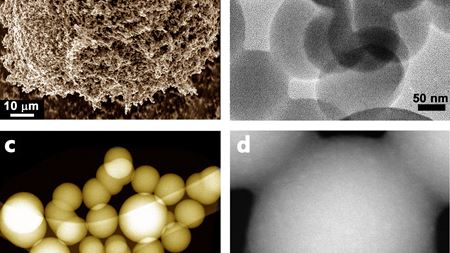
carbon spheres, which can be produced easily and greenly, could adsorb carbon dioxide from industrial processes
29 January 2021Cordelia Sealy
Squeezing a promising perovskite material in a diamond anvil cell produces a so-called 'black' phase that's stable enough for solar power applications.
29 January 2021